consider the cyclic process ABCA on a sample of 2.0 mol of an ideal gas as shown in the temperature of the gas at A and B are 300 K and 500 k respectively. A total of 1200 J heat is withdrawn from the sample in the process. Find the work done by the gas in part BC. take R=8.3JK−1mol−1
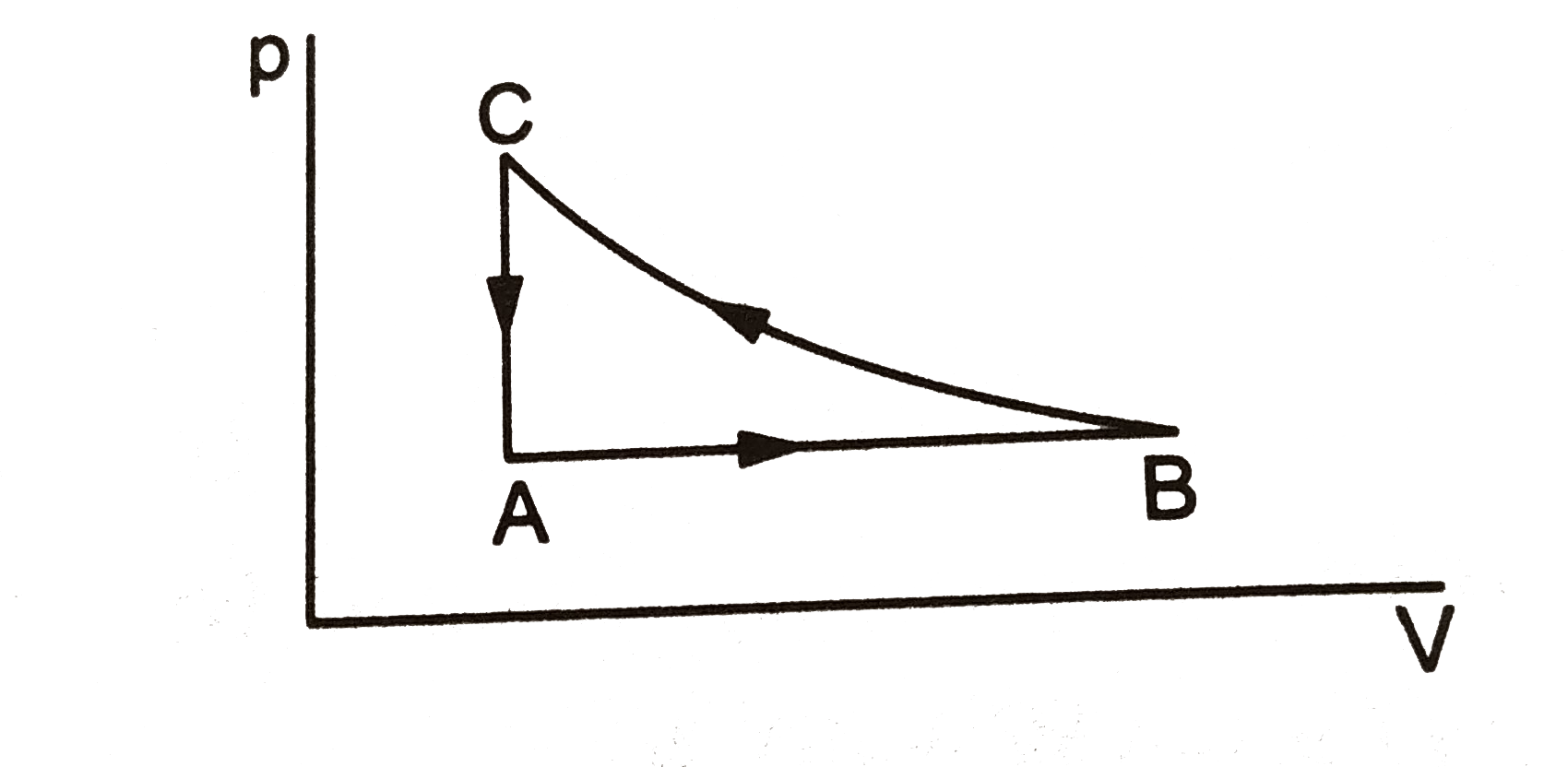
The change in internal energy during the cuclic process is zero. Hence, the heat supplied to the gas is equel to the work done by it, Hence, WAB+WBC+WCA=1200J.
The work done during the process AB is
W_(AB)=p_(A)(V_(B)-V_(A)<br>=nR(T(B)−TA)
(2.0mol)(8.3JK−1mol−1)(200K)
=3320J.
The work done by the gas during the process CA is zero as the volume remains constant. from (i),
3320J+WBC=1200J
or, WBC=−4520J.
≈−4500J.
Topper's Solved these Questions
- LAWS OF THERMODYNAMICSBOOK - HC VERMACHAPTER - LAWS OF THERMODYNAMICSEXERCISE - Objective 1
9 Videos
- LAWS OF THERMODYNAMICSBOOK - HC VERMACHAPTER - LAWS OF THERMODYNAMICSEXERCISE - Objective 2
5 Videos
- LAWS OF THERMODYNAMICSBOOK - HC VERMACHAPTER - LAWS OF THERMODYNAMICSEXERCISE - Short Answer
15 Videos
- KINETIC THEORY OF GASESBOOK - HC VERMACHAPTER - KINETIC THEORY OF GASESEXERCISE - Exercises
62 Videos
- NEWTON'S LAWS OF MOTIONBOOK - HC VERMACHAPTER - NEWTON'S LAWS OF MOTIONEXERCISE - Exercises
42 Videos
Similar Questions
Consider the cyclic process ABCA, shown in, performed on a sample of 2.0 mol if an ideal gas. A total of 1200 J if heat is withdrawn from the sample in the process. Find the work done by the gas during the part BC.
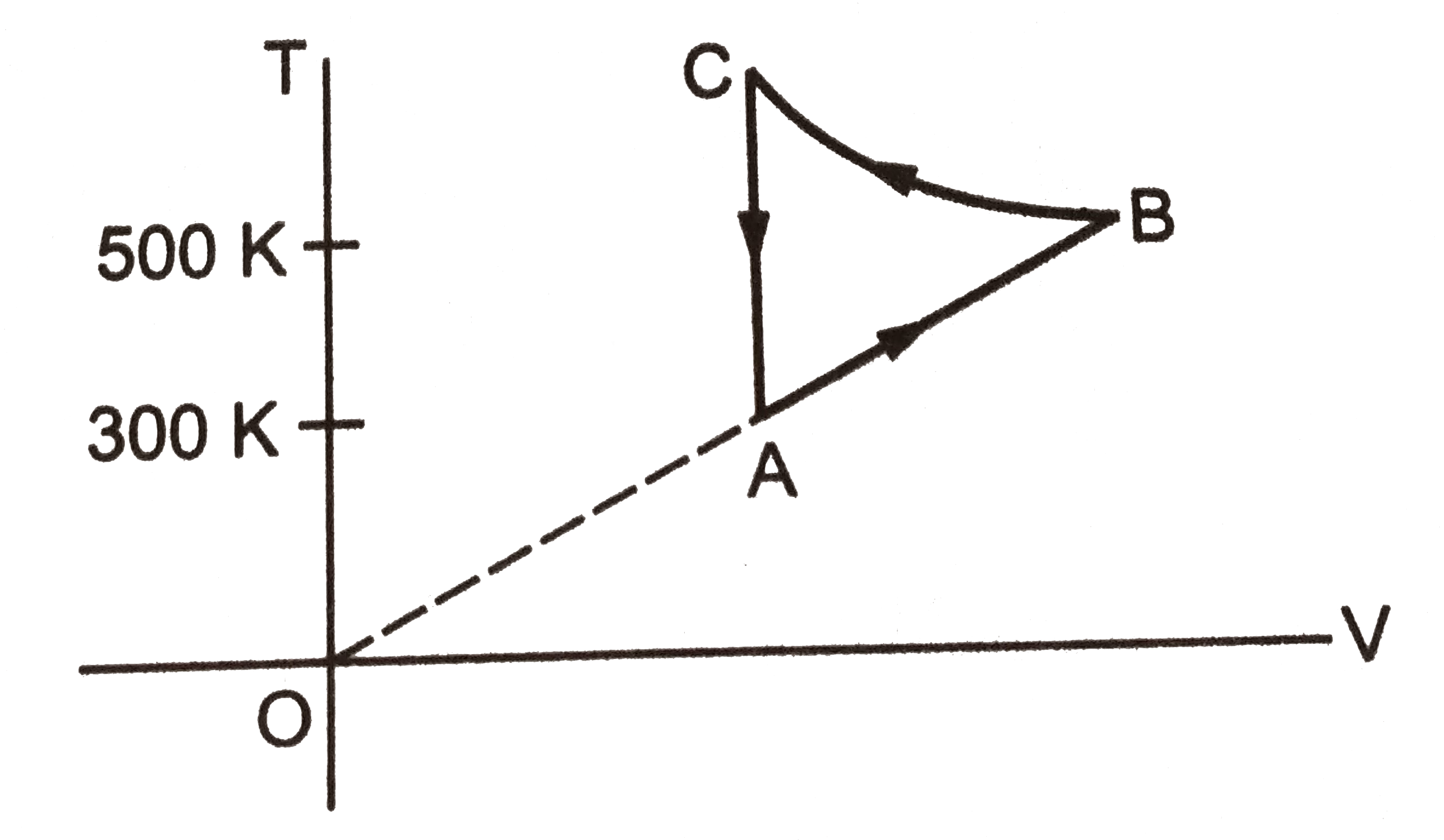
View Solution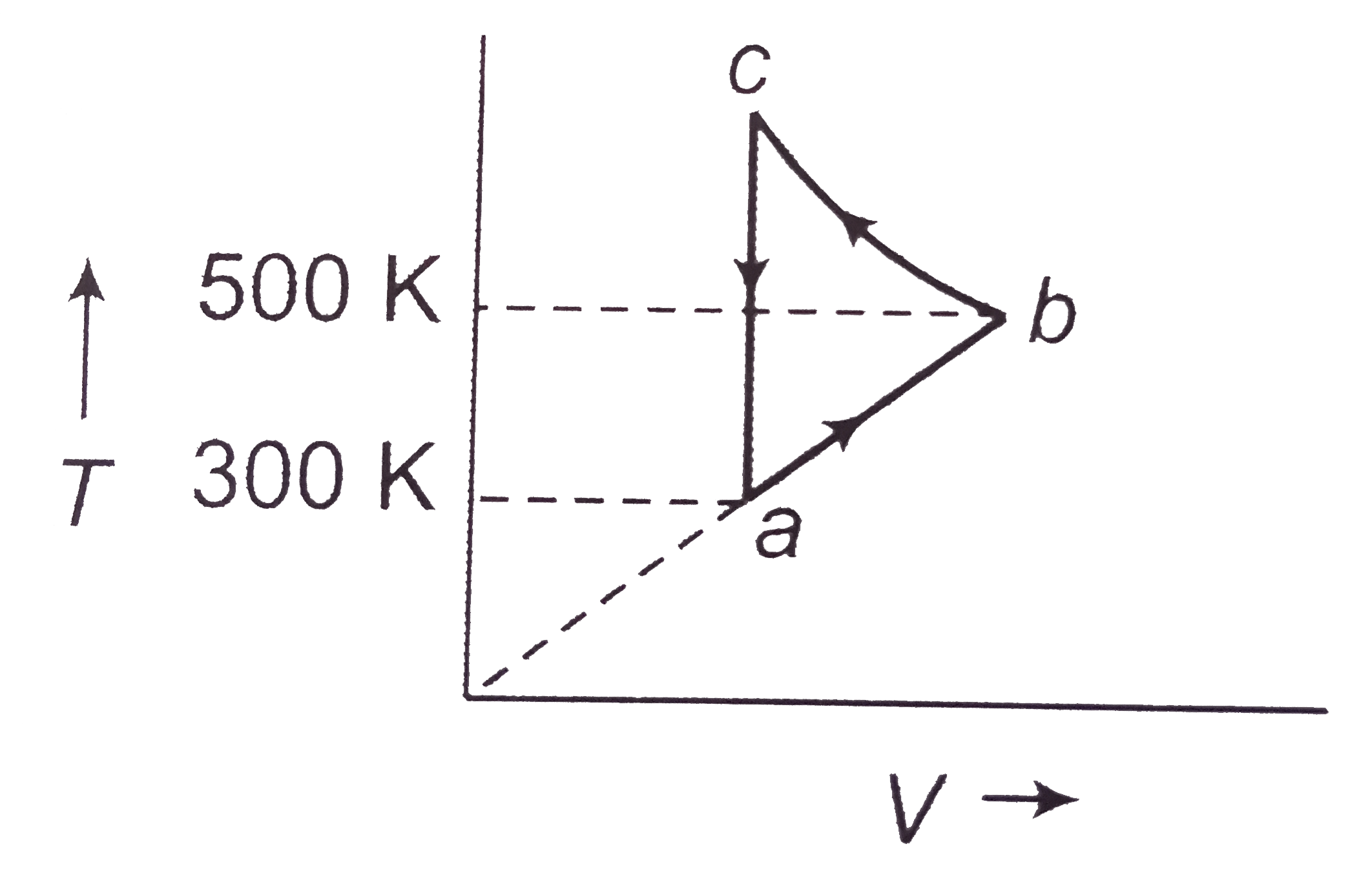
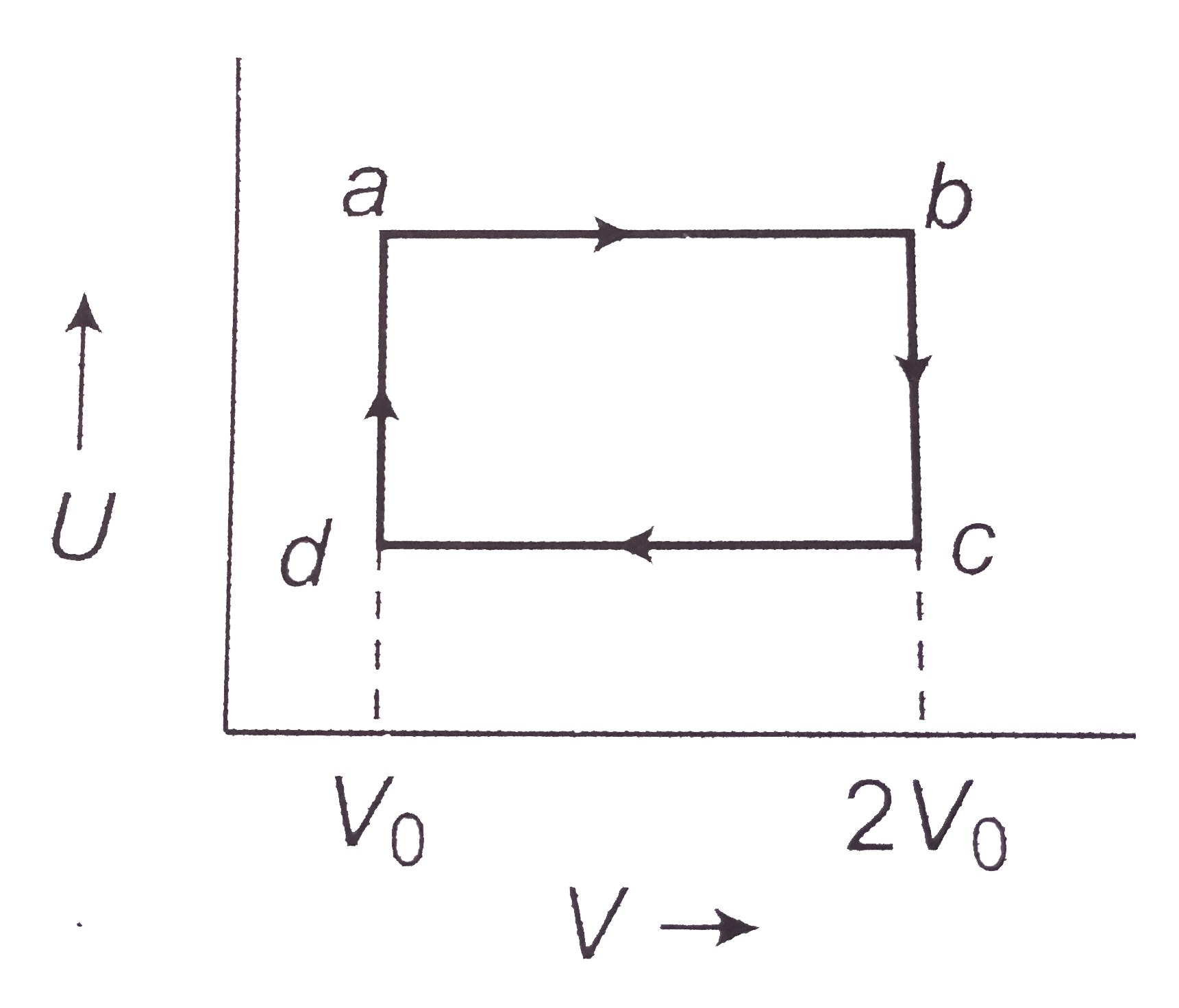 Consider the cyclic process abca performed on a sample of 2.0 mole of an ideal gas. A total of 1000 cal of heat is withdrawn from the sample in the process. Find the work done by the gas during the past bc.
Consider the cyclic process abca performed on a sample of 2.0 mole of an ideal gas. A total of 1000 cal of heat is withdrawn from the sample in the process. Find the work done by the gas during the past bc.
View Solution
Knowledge Check
The cyclic process for 1 mole of an ideal gas is shown in the V-T diagram. The work done in AB, BC and CA respectively is
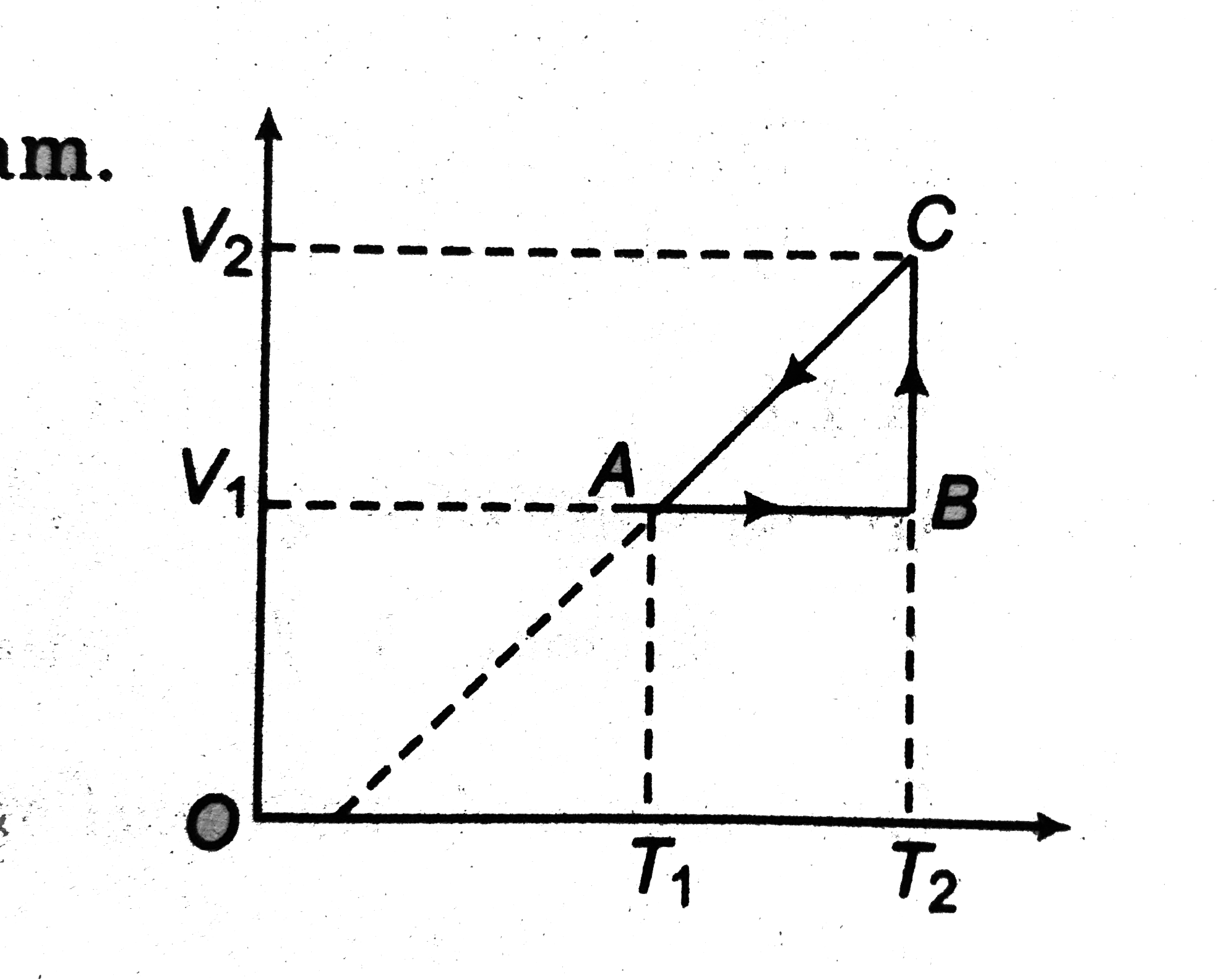 A(a) 0, RT2In∣∣∣V2V1∣∣∣,R(T1−T2)B(b) R(T1−T2),0,RT1In∣∣∣V1V2∣∣∣C(c) 0,RT1In∣∣∣V1V2∣∣∣,R(T1−T2)D(d) 0,RT_(2)In|V_2/V_1|,R(T_2-T_1)
A(a) 0, RT2In∣∣∣V2V1∣∣∣,R(T1−T2)B(b) R(T1−T2),0,RT1In∣∣∣V1V2∣∣∣C(c) 0,RT1In∣∣∣V1V2∣∣∣,R(T1−T2)D(d) 0,RT_(2)In|V_2/V_1|,R(T_2-T_1)A cyclic process performed on one mole of an ideal gas. A total 1000 J of heat is withdrawn from the gas in a complete cycle. Find the work. Done by the gas druing the process B→C.
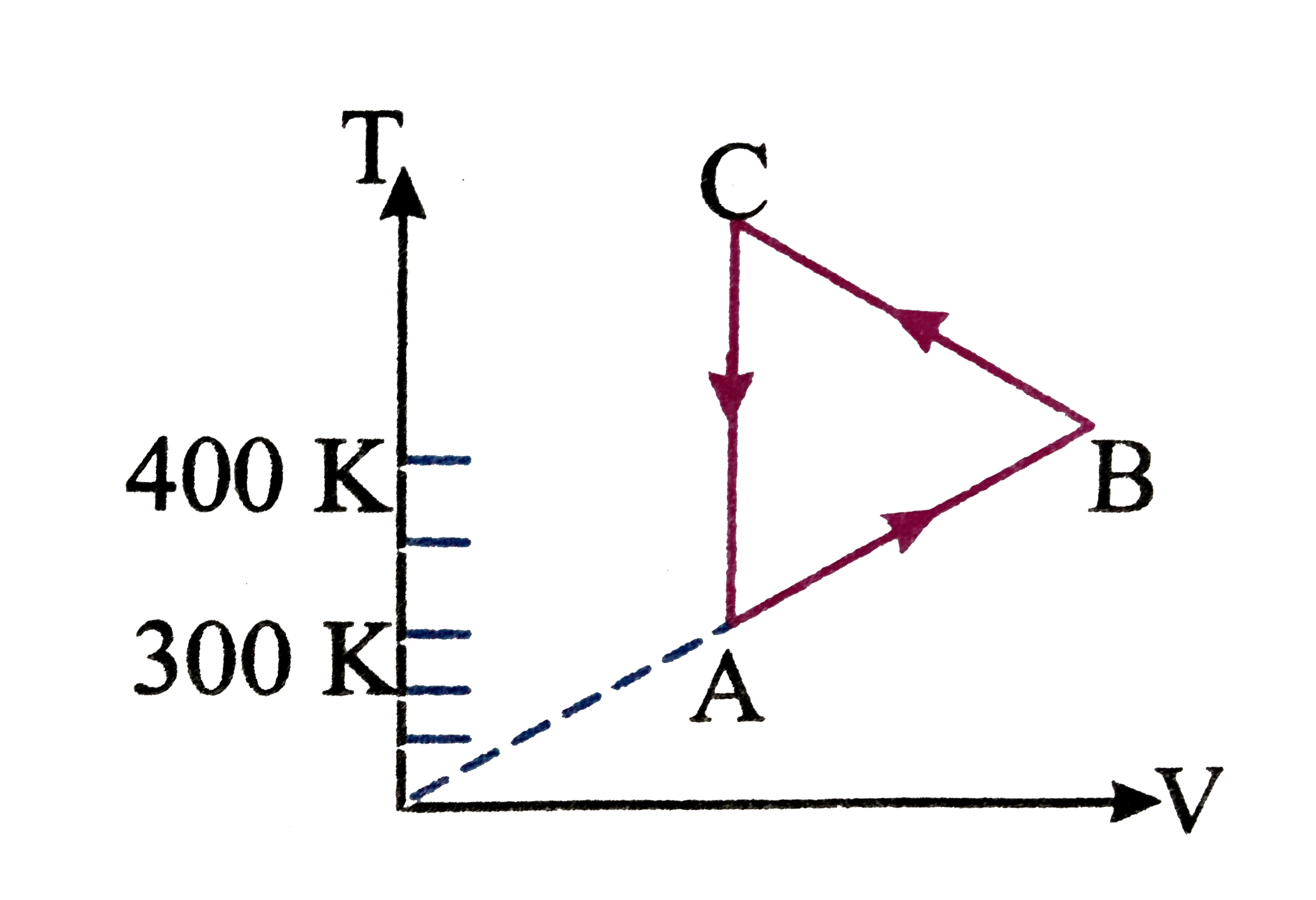 A−1531JB−1631JC−1731JD−1831J
A−1531JB−1631JC−1731JD−1831JA cyclic process for 1 mole of an ideal gas is shown in the V-T diagram. The work done in AB, BC and CA respectively are
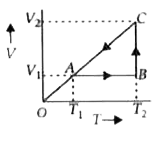 A0,RT1ln(V1V2),R(T1−T2)BR,R(T1−T2),RT1ln(V1V2)C0,RT2ln(V1V2),R(T1−T2)D0,RT2ln(V2V1),R(T1−T2)
A0,RT1ln(V1V2),R(T1−T2)BR,R(T1−T2),RT1ln(V1V2)C0,RT2ln(V1V2),R(T1−T2)D0,RT2ln(V2V1),R(T1−T2)
 Consider the following cyclic abcda performed on 2 mole of an ideal gas. The temperature of the gas at b and c are 400 k and 300 k respectively. Calculated the heat absorbed by the gas during the process in calories.
Consider the following cyclic abcda performed on 2 mole of an ideal gas. The temperature of the gas at b and c are 400 k and 300 k respectively. Calculated the heat absorbed by the gas during the process in calories.
View SolutionIn figure, a sample of 3 moles of an ideal gas is undergoing through a cyclic process ABCA.A total of 1500J of heat is withdraw from the sample in the process. The work done by the gas during the part BC is −PKJ.FINDP.(R=253J/moleK)
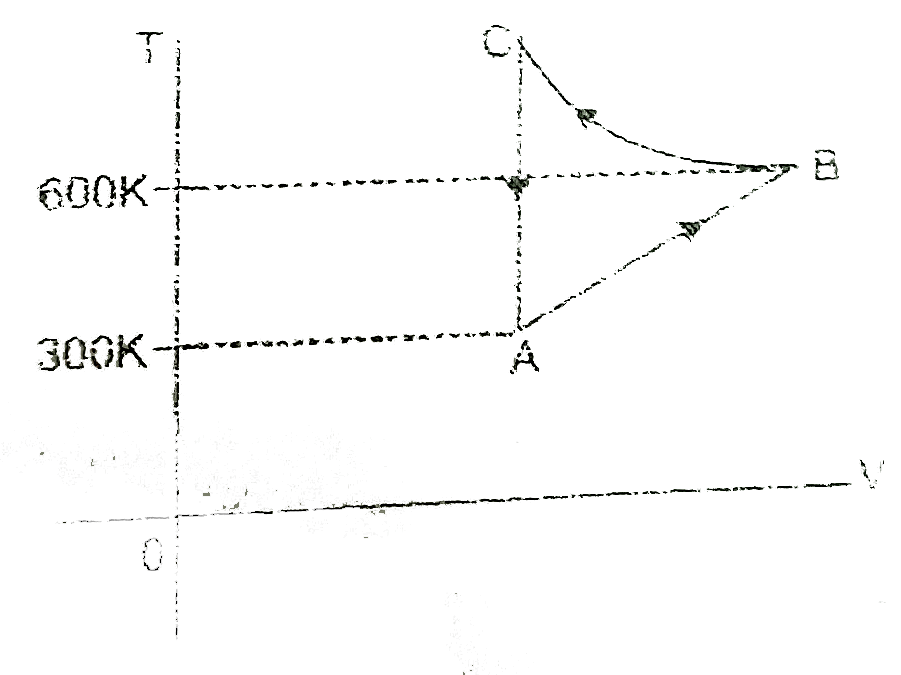
View SolutionIn figure, a cyclic process ABCA of 3 moles of an ideal gas is given. The temperature of the gas at B and C are 500k and 1000K respectively. If work done on the gas in process CA is 2500J then find the net heat absorbed or released by an idela gas. Take R=25/3J/mol−K.
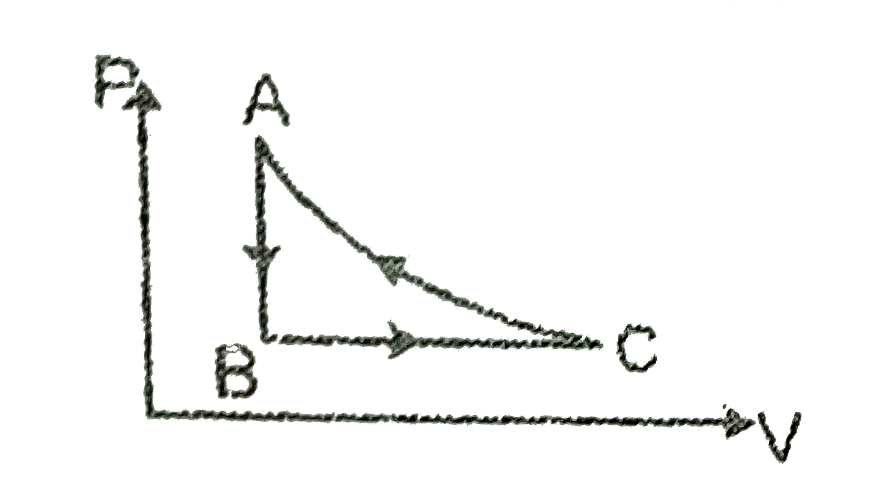
View Solutionshows the variation in the internal energy U with the volume V of 2.0 mol of an ideal gas in a cyclic process abcda. The temperatures of the gas at b and c are 500 K and 300 K respectively. Calculate the heat absorbed by the gas during the process.
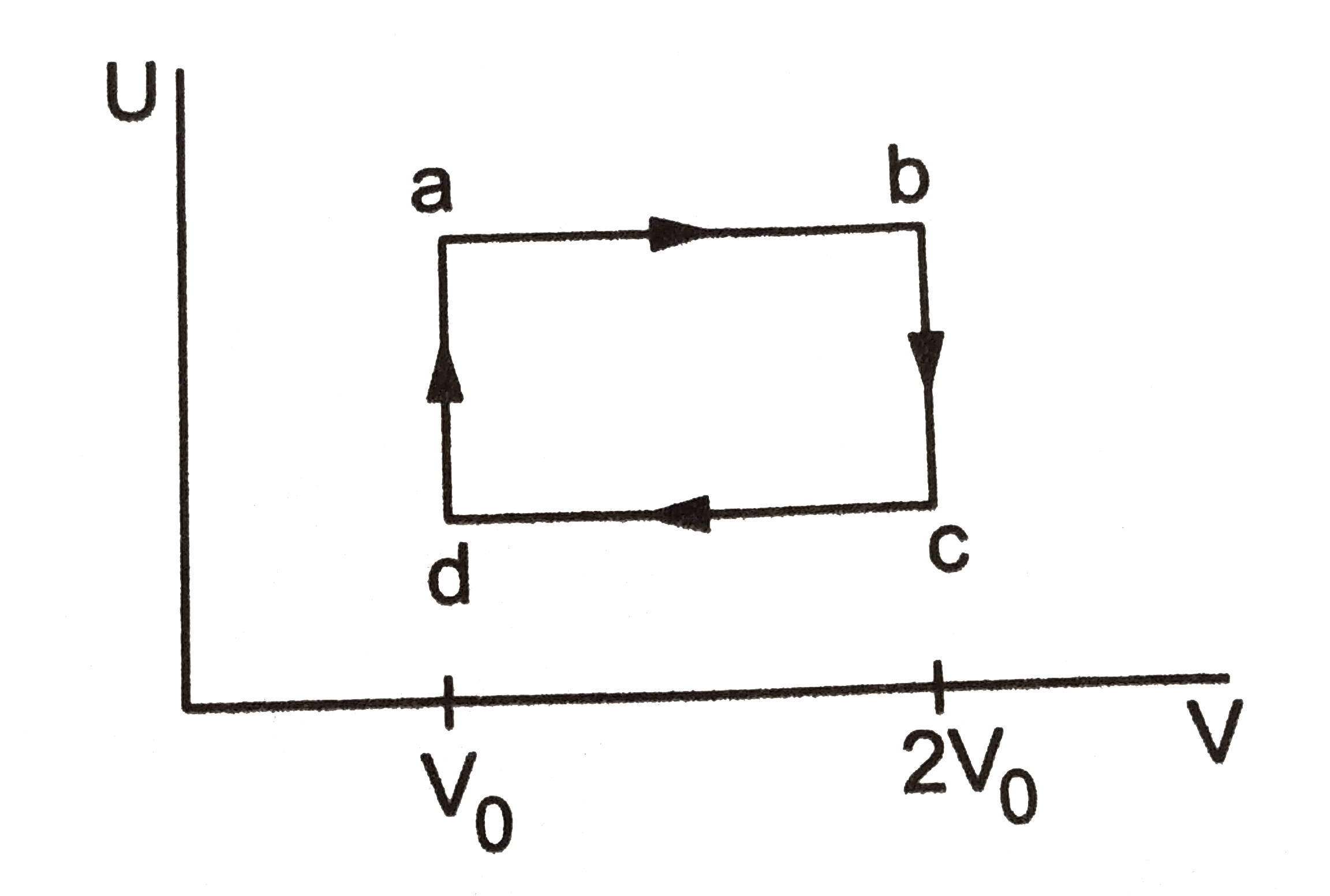
View SolutionA sample of ideal gas is taken through the cyclic process shown in the figure. The temerauture of the gas in state A is TA =200 K. In states B and C the temperature of the gas is the same.
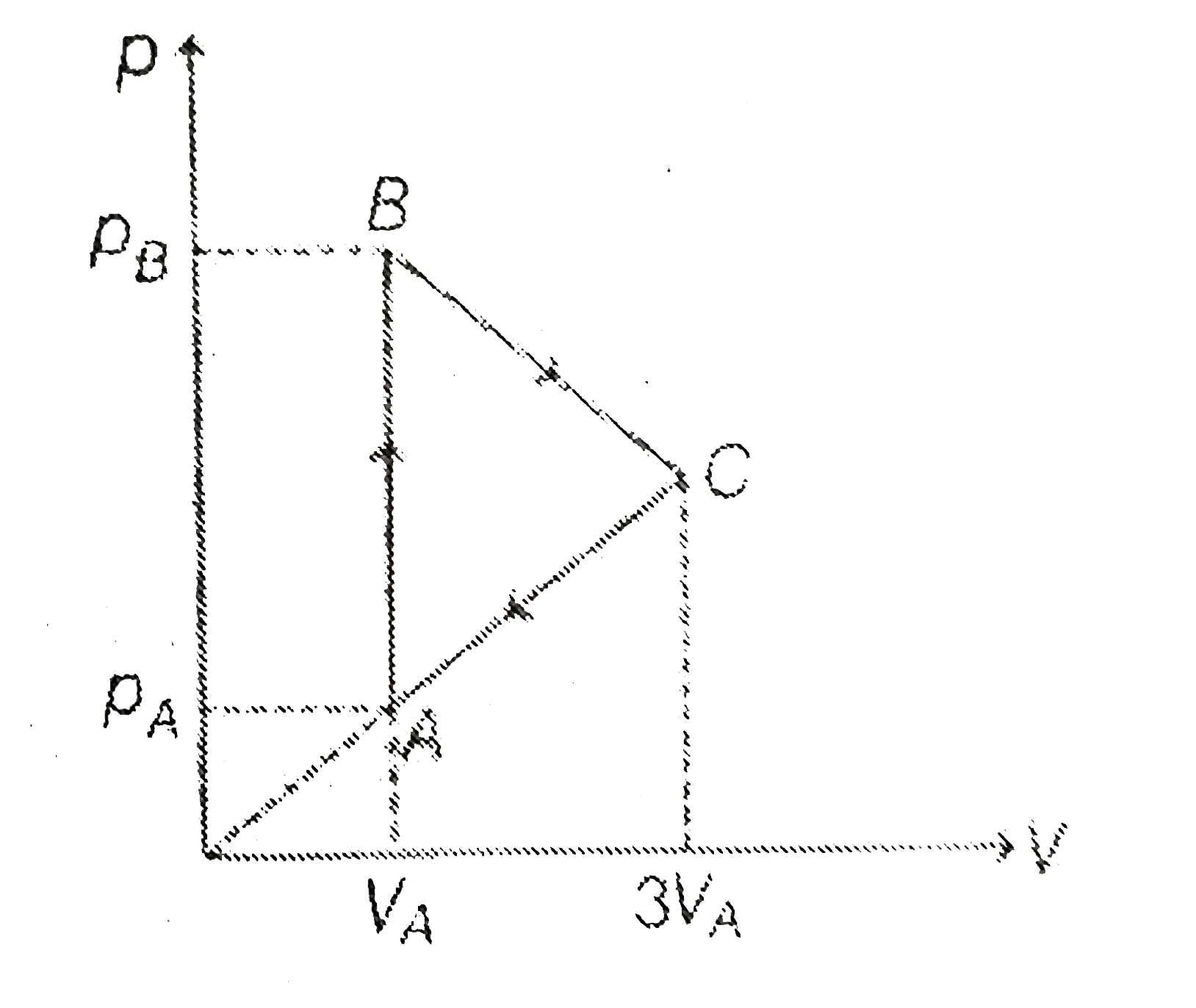
Net work done by the gas in the process is
View Solution
